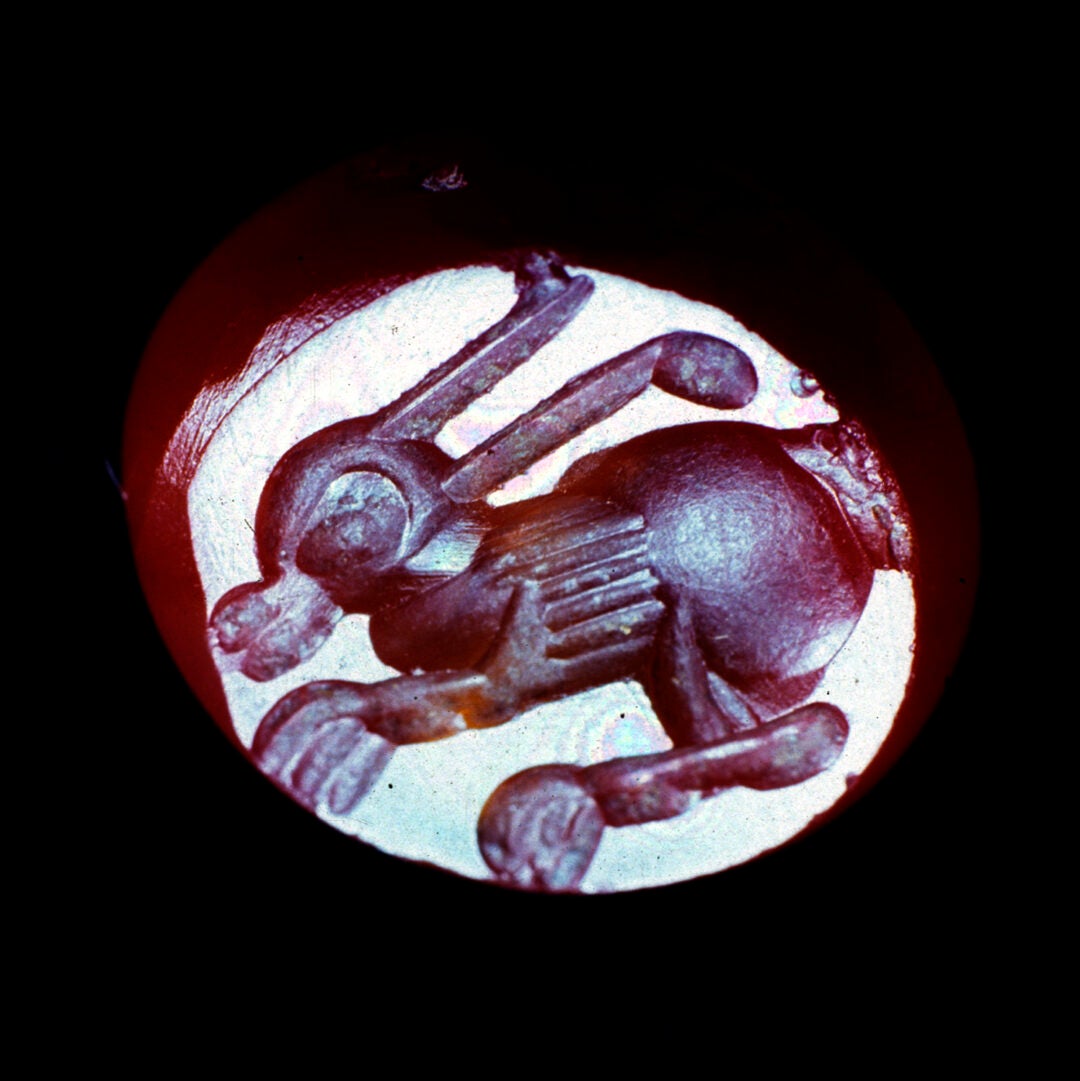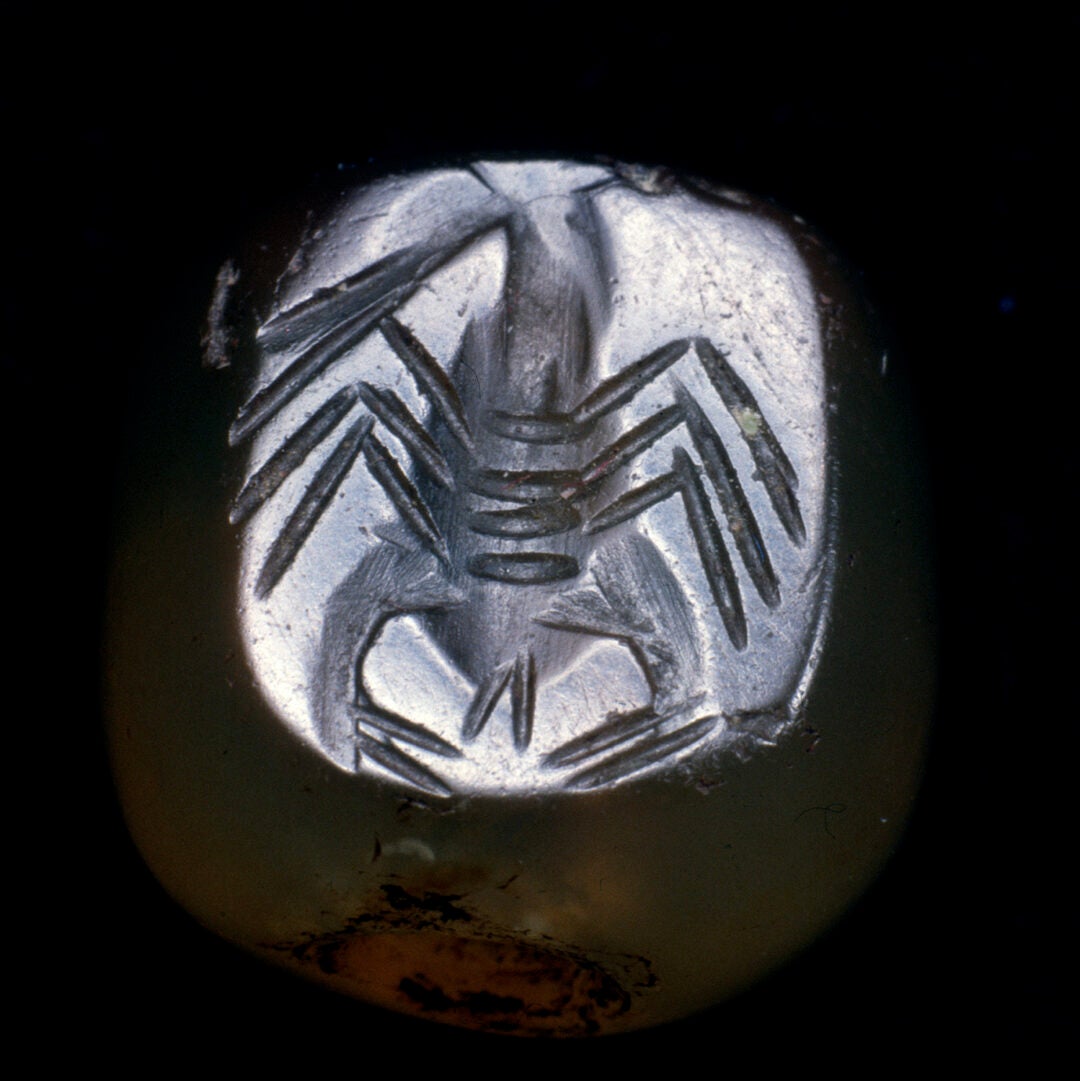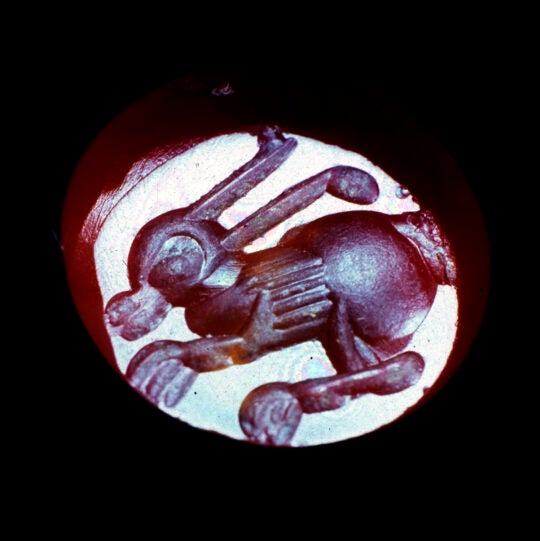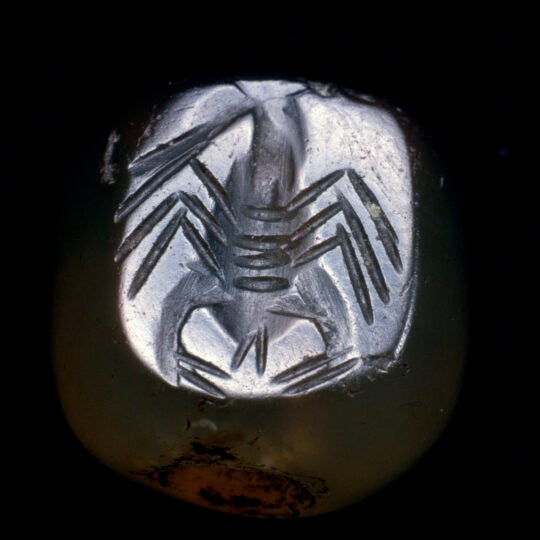Animal Seals from Ancient Iran, c. 500 A.D.
The Sasanian Dynasty ruled in the area of what is now Iran from 224-651 C.E. The first king, Ardashir I, overthrew the Parthians, who had ruled Iran from 247 B.C.E. through 224 C.E. Ardashir and his successors built an empire that covered much of the area between what is now Iraq and India.
The official religion of the empire was Zoroastrianism, whose adherents believed in a creator god called Ohrmazd or Ahura Mazda. Zoroastrianism was founded by a Persian prophet named Zoroaster or Zarathustra. It is still practiced today in India by the Parsis. Other religions were practiced in the empire, including Christianity and Manichaeanism. The latter was founded by the prophet Mani in the 3rd century C.E. but was considered a dangerous heresy by the Zoroastrians.
The Sasanians were involved in a long-distance trade, controlling the seagoing routes through the Arabian and Red Seas. They exported such goods as silver and gold vessels, cut glass, and brocades made from Chinese silk. The Sasanian rulers carried out military campaigns against Roman Syria in the 3rd century C.E., and against Syria, Palestine, and Egypt in the early 7th century. The Sasanian Dynasty was finally overthrown by Islamic armies in 641 C.E., only 19 years after the Sasanians had nearly defeated the Byzantine empire at Constantinople.
Because there have been few archaeological surveys or scientific excavations in the region of the Sasanian empire, little material evidence has come to light from this period of Iran’s history. Some building ruins have been found, the most interesting of which are several domed pavilions, probably used as temples, in which worship centered on fire, a symbol of the god Ahura Mazda’s light and energy. Numerous Sasanian coins have been found as far away as China, and other material remains include small objects such as the animal seals shown here. These seals date from about the fifth century C.E. Shown here are a rabbit, a scorpion and a stag carved in various kinds of stone.
Sassanian Seal, Rabbit, Carnelian

Sassanian Seal, Scorpion

Sassanian Seal, Stag, Carnelian

Inscriptions and Artifacts in the USC Archaeology Research Center
- Etruscan Lion Plaque Pendant A gold pendant from 650-600 B.C.
- Statue of Isis A gold statue of the Egyptian goddess Isis.
- Deity on a Bull A small sacred figurine from the area of Syria-Palestine.
- Egyptian Ushabti An ancient Egyptian representation of a mummy.
- Sasanian Seals Seals with animal designs from ancient Iran.
- Seals Assorted seals.
- Coins Caesar Vespasian and Alexander III Coins.
- Bullae Roman Period Bullae (Seal Impressions).
- USC Archaeology Research Center Web Site
Article Categories
Non-Biblical Ancient Texts Relating to the Biblical World: Non-biblical inscriptions and documents from ancient times that improve our understanding of the world of the Bible.
Biblical Manuscripts: Images and commentary on ancient and medieval copies of the Bible.
Dead Sea Scrolls: Images and commentary on selected Dead Sea Scrolls manuscripts.
USC Archaeology Research Center: Images of artifacts from the teaching collection of the University of Southern California.


